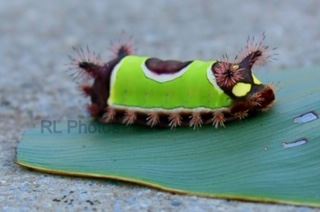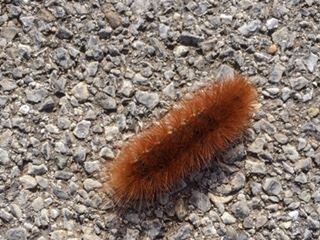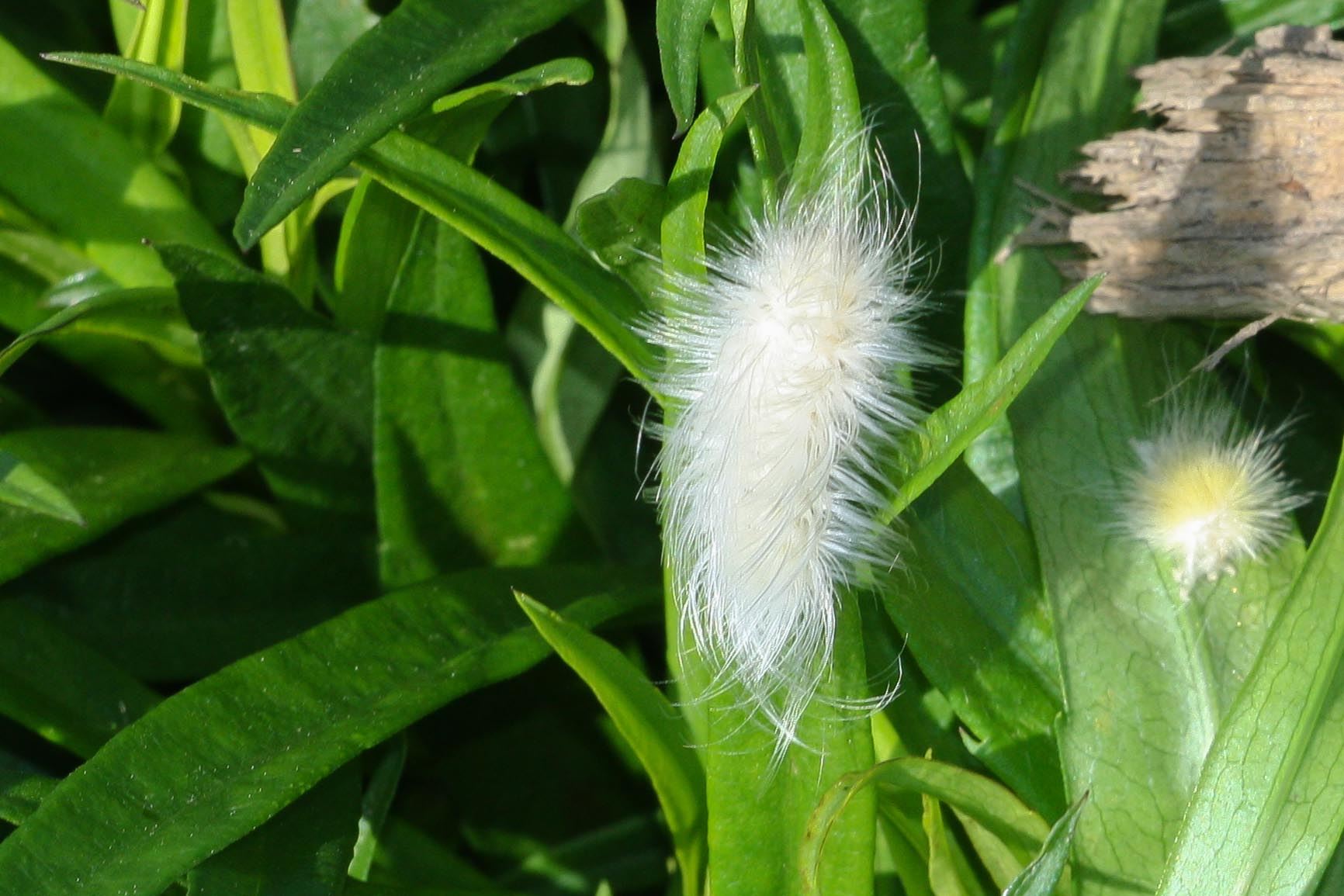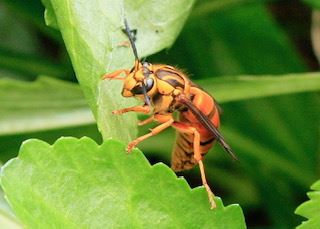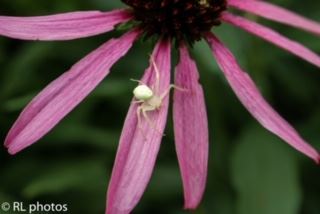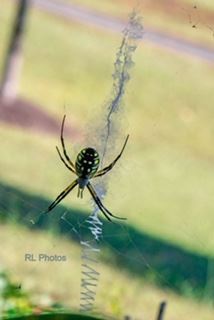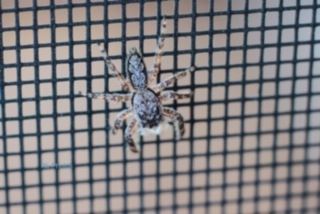Dangers in the Garden - Part 4Painful and Poisonous Critters - by R. Lieber The garden has always been a place of peace for me. Many homeowners try to create a sanctuary for the many creatures that share their garden but sometimes the unwitting gardener can be drawn into these battles for existence in a way that can be quite painful. Up to now we have been looking at the plants that can hurt us but now we'll turn to the creatures from the insect world that can cause grief. While most of the caterpillars we have in our gardens don't hurt us beyond the pain of munched on plants, there are a handful of fuzzy and spiny characters to watch out for and, if possible, remove, especially if there are young children who like to touch things and help in the garden. As we have seen from previous articles in this series garden gloves protect hands, but I discovered (the hard way) there is another benefit to keeping bare skin to a minimum besides avoiding toxic plant sap, and sharp things. I had removed my gloves trying to get between small branches of some plants to pull out some debris and felt a sharp sting in a couple of places on my fingers and palm. Looking carefully I found cute looking cartoon character wrapped in the leaves I had pulled out. It was my initiation into just how painful a caterpillar "sting" could be and for how long that pain could last. That caterpillar is called the saddleback, because of its markings; a tan and green saddle on a bright green caterpillar. It is part of a family called slug caterpillars all of which are colorful and have stinging bristles. Most seem to hide beneath leaves both on the ground and on plants. They often look cute and cuddly until you look up close and see the arsenal of spines covering them. These barbs stay hooked in the skin and efforts to remove them can inject more of the toxin that causes excruciating and stinging pain. My lesson in pain lasted for several days despite all home remedies I tried, only gradually fading.
Unless someone has allergies, some fuzzy caterpillars can be handled and are not usually dangerous. The popular winter cold predicting Wooly Bear caterpillars have been played with by children for generations. However, it's wise not to touch any caterpillar you are not sure of. The fur or hairs are actually something called setae. Many of the big Tussock moth family caterpillars have inviting looking fur that invite petting, but touching any of this group may be painful because of the barbs hidden by the fuzzy coat. The extremely painful puss caterpillar looks like a long haired cat or the TV character 'Cousin It' and is the larva of the Southern Flannel Moth. It has several common names, including "Asp Caterpillar" and "Toxic Toupee." The species has apparently been increasing in numbers across the south and into Texas and has made the news more often in the last couple of years for dropping on unsuspecting victims and leaving them with huge welts and wounds that look like burns. The Hag Moth caterpillar, which is sometimes also called a monkey slug, doesn't look like a caterpillar at all but more like a fuzz covered starfish and should also be avoided due to its nasty stinging surprise. If someone comes in contact with stinging hairs from any caterpillar it is important to mitigate the damage as quickly as possible. It is often recommended to wash the area with soap and water but that is a great second step. Those setae and stingers stay stuck in the skin, so moving and touching them while washing make the pain worse. First grab any kind of tape and use its sticky side to pull off any setae still attached to the skin, repeating until it no longer feels like fresh painful spots are happening. Follow up with cool water and soap without rubbing, and then rinse several times with running cold water. This will help reduce allergic reactions as well. Old fashioned baking soda and water paste can sooth the site and hydrocortisone cream or ice pack on the spot can sometimes help by reducing inflammation. A trip to the doctor for further treatment may be needed. In the case of the saddleback stingers be prepared for at least a few days or more of pain anytime the stinger site is touched. The Velvet Ant (aka Cow Killer) is not easily forgotten because it is a quite large bright orange and black "ant". The species are solitary wasps and only the female is wingless. Its sting is considered one of the most painful and said to be strong enough to kill a cow, or so the myth goes. Bright orange in nature is frequently considered a warning that something is toxic or quite painful and this is no exception. In my garden I have seen them most often late in the day. They seem to avoid midday sun. Bald Face Wasp and Yellow Jackets are wasps known for their painful stings. Individually they often do not sting unless feeling threatened, however, both will defend their nests in numbers. Keep an eye out for places they seem to fly in and out of as a sign of a nest. Assassin bugs are actually a large family of bugs that are most often considered beneficial by gardeners and come in many shapes and sizes. A lot of them can inflict a painful wound with their weapon like single fang usually reserved for killing insects. Wearing solid garden gloves when moving leaves and debris will usually avoid problems. Most often the assassin bugs will avoid you. In fact. I have had a difficult time photographing this shy group in my garden when I do come across them. Bug Guides has an excellent page of photos on the many members of this family if you are curious. There are only 3 spiders that will be dangerous to most of us but other spiders can leave us with bites that can be about the same as a bee sting unless you are allergic to their venom. See the references below for ID and how to deal with bites. They are not usually outside in the direct sunlight but I have included them because they can lurk in places like potting sheds, barns and garages where garden tools are kept. Of the 5 species of the Black Widow spider we have two here in East Tennessee (the northern and the southern) and both have a similar red hourglass mark. They have very irregular messy webs and love hiding out in garages, basements, woodpiles and even have been inside my mailbox. They are not commonly found in bright sunny gardens. A relative, the Brown Widow spider has made a few appearances in this part of the state but its bite is much more harmful than that of the black widow. The last spider on the dangerous to humans list is the Brown Recluse. It too prefers to hide in dark places and is considered quite elusive and shy. Keeping dark areas like the basement clean and debris free reduces chances of being bitten.
In general ants are useful as part of the garden ecosystem but they can be annoying when they get in the house. Most are not in any way dangerous because their bites are normally not sufficient to cause a sizable reaction except in those already allergic. The exception is the fire ant whose bite can be quite painful and most victims are bitten by multiple ants after inadvertently disturbing the nest. In some cases people can have severe allergic reactions called anaphylactic shock. I almost didn't include one last group, the Kissing Bugs. Recent news has been warning people about its arrival and the serious consequences of its bite which results in Chagas disease. This is a serious disease and can be fatal. The chances of being bitten in your garden are still low (these bugs seem to bite at mostly at night) but there are increasing concerns of more invading East Tennessee. References Recommendations on treatment for caterpillars that are fuzzy, have stinging hair or bristles: https://www.poison.org/articles/2014-jun/caterpillar-stings If you want to learn more about bugs and caterpillars you come across in your garden here are some identification resources: http://entomology.ca.uky.edu/entfacts https://www.insectidentification.org/butterflies-and-moths.asp https://bugguide.net/node/view/57 A great photograph reference for most of the hurtful caterpillars we might find here in East Tennessee: http://www.arkinspace.com/2011/05/stinging-caterpillars-of-united-states.html A great way to identify several common wasps and bees: A picture reference for spiders with bites can be found here: https://www.domyown.com/images/content/dangerous%20US%20spider%20bites%20guide.jpg A good reference for common spiders we encounter in the garden is here: https://entomology.ca.uky.edu/spider-chart The University of Tennessee has excellent pamphlets for the black widow and brown recluse spiders: https://extension.tennessee.edu/publications/Documents/pb1191.pdf https://extension.tennessee.edu/publications/Documents/PB1193.pdf Kissing Bugs and Chagas ( a new concern) An excellent picture heavy way to see the differences between other similar bugs and the kissing bug: https://kissingbug.tamu.edu/found-a-bug/ Information on Chagas https://www.cdc.gov/parasites/chagas/gen_info/detailed.html https://www.tn.gov/health/cedep/reportable-diseases/chagas.html |


